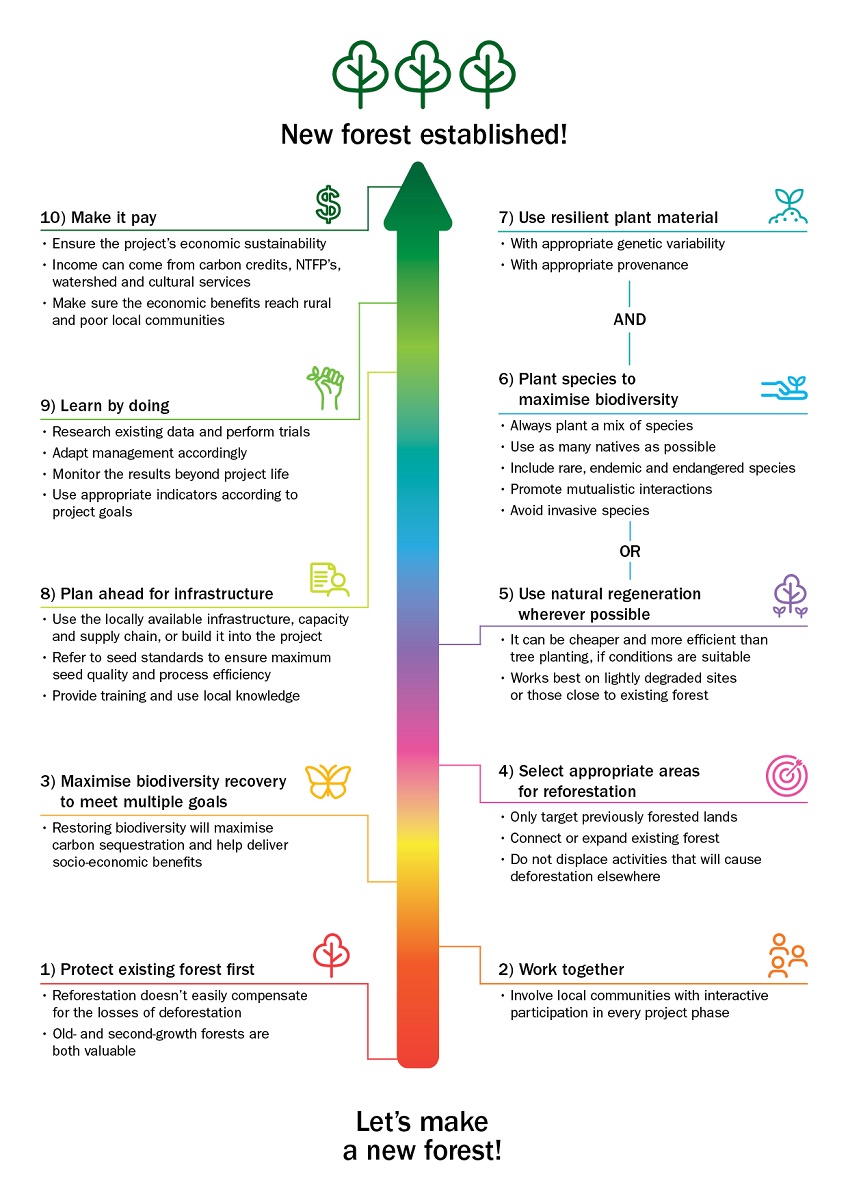Preprint
Review
Ten Golden Rules for Reforestation to Optimise Carbon Sequestration, Biodiversity Recovery and Livelihood Benefits
Submitted:
04 September 2020
Posted:
05 September 2020
You are already at the latest version
Abstract
Global climate change requires urgent solutions. Ambitious tree-planting initiatives, many already underway, aim to sequester enormous quantities of carbon, partly compensating for the anthropogenic CO2 emissions that are a major cause of rising global temperatures. However, poorly planned and executed tree-planting could actually increase CO2 emissions and have long-term, deleterious impacts on biodiversity, landscapes and livelihoods. Here, we highlight the main environmental risks of large-scale tree planting and propose ten golden rules, based on some of the most recent ecological research, to implement forest ecosystem restoration that maximizes rates of both carbon sequestration and biodiversity recovery, while simultaneously improving livelihoods. These are: i) Protect existing forest first; ii) Work together (involving all stakeholders); iii) Maximize biodiversity recovery to meet multiple goals; iv) Select appropriate areas; v) Use natural regeneration wherever possible; vi) Select species to maximise biodiversity; vii) Use resilient plant material (with appropriate genetic variability and provenance); viii) Plan ahead for infrastructure, capacity and seed supply; ix) Learn by doing (using an adaptive management approach); and x) Make it pay (ensuring the economic sustainability of the project). We focus on the design of long-term strategies to tackle the climate and biodiversity crises and support livelihood needs. We emphasize the role of local communities and their dependence on benefits from successful reforestation programmes that restore ecosystem functioning and deliver a diverse range of forest products and services. While there is no simple and universal recipe for forest restoration, it is now crucial to build on the public and private interest in this topic to ensure interventions provide effective, long-term carbon sinks and maximise benefits for biodiversity and people.

Keywords:
Afforestation
; Climate change mitigation
; Ecological Restoration
; Forest landscape restoration
; Large-scale tree planting
; Natural regeneration
; Nature-based solutions
; Stakeholders participation
Copyright: This open access article is published under a Creative Commons CC BY 4.0 license, which permit the free download, distribution, and reuse, provided that the author and preprint are cited in any reuse.
Downloads
842
Views
1220
Comments
0
Subscription
Notify me about updates to this article or when a peer-reviewed version is published.
MDPI Initiatives
Important Links
© 2025 MDPI (Basel, Switzerland) unless otherwise stated






